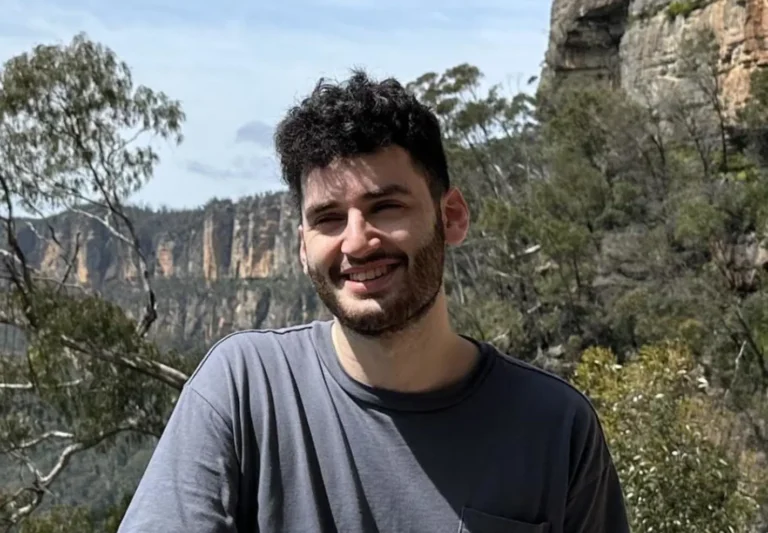
Paddling into a Sydney Basin apocalypse

Sydneysider: A personal journey
Around 1962, when I was about 14 or 15, my father brought home a job for me to finish. It was the bare wooden frame for a two-seater white-water kayak of German design. It was about five metres long – a project one of the blokes at his work had abandoned. Dad mentioned something about a German having paddled one like it all the way to Australia before the Second World War, but that seemed preposterous.
Half a century ago, if you wanted something like a kayak, you usually had to make it yourself. A bought job would have been prohibitively expensive, even if you could have sourced one. At least, that was the case in Australia, it was different in Europe and no doubt in North America.
We set the frame up on a jig in the garage and I applied a skin of very thin marine-grade plywood which had to be attached with special waterproof glue and hundreds of tiny brass screws. Then there were fiddly fit-out details like seats and paddles and fore and aft watertight compartments, not to mention painting and varnishing.
I was very proud of the finished job, particularly since my military heroes at the time were a tiny band of Royal Marine commandos who launching their kayaks from a submarine off the mouth of the notoriously treacherous Girond Estuary in 1942, paddled a hundred kilometers upstream and sunk a lot of German shipping in the harbour at Bordeaux. Their kayaks were about the same size as mine but being canvas-sided and flat-bottomed were flimsier and less seaworthy.
Decades later, I was to find that the crazy story about the German paddling to Australia was true. In 1932, Oskar Speck, an unemployed Hamburg electrician, gathered up his collapsible kayak, caught a bus to the Danube and set off for Cyprus, where he’d heard there was work in the copper mines.
When he arrived – via Austria, Hungary, Yugoslavia, Macedonia, Greece and Turkey – there was no work, so Speck, obtaining a sponsorship from the Pionier Faltboot (‘collapsible boat’) company, set off for Australia (the company replaced his kayak four times). He paddled to what’s now Lebanon, went overland to Syria, and paddled down the Euphrates to the Persian Gulf. Hugging the coasts of Pakistan, India, Burma, Thailand and Malaya he arrived in the Dutch East Indies in 1937. He then skirted around the north coast of New Guinea and, in September 1939, reached Thursday Island with a Nazi pennant still flying at the prow. He was warmly congratulated on his achievement by the local Australian constabulary and promptly arrested as an enemy alien. It was a lucky break because if he’d made it back to Germany he was the sort of bloke who’d probably have died at Stalingrad.
Speck wasn’t released until 1945. He spent his long years in internment developing a new machine to cut opals. After the war he became an opal miner at Lightning Ridge and later, a successful opal merchant. He settled, eventually, at Kilcare Heights near Gosford, and was active in the early conservation and kayaking movements. He never returned to Germany.
I’ve had lots of wonderful adventures in my home-built kayak. One of the strangest was in 1979, when my partner Lee and I launched from Wisemans Ferry and paddled up Webbs Creek, unknowingly into one of those unexpected apocalyptic summer storms that can lash the Sydney Basin. It was a stunning day, but when we’d got quite a way up, we noticed a biblical front barrelling in from the south-west like a purple-black wall.
Looking for somewhere to shelter we saw a hand punt and a few cars parked in the bush beside the creek. The roar of the oncoming storm was tremendous and a dense curtain of hail advanced across the paddock on the opposite bank. We hauled the kayak out of the creek and crawled under a car trailer. The paddock disappeared from view and hail stones the size of ping pong balls lashed the creek like machine gun bullets.
Lying under the trailer we were protected from the onslaught, but water started coursing down the hill behind us and soon we were lying in several centimetres of freezing slush.
And then suddenly it was all over. The surrounding cars were badly dinged. A couple of excited horses galloped madly around the paddock and rolled in the hail that lay like snow on the ground. Hailstones had holed the deck of the kayak in a couple of places. The owner of the property opposite, which seemed to be some sort of group holiday establishment, hailed us and said we should come over on his hand punt, dry ourselves and have a hot drink.
We enthusiastically accepted his kind offer, only to land – to my horror, being a good lefty – in the middle of a Zionist youth camp. There were a lot of teenage kids, a clutch of young Eastern Suburbs Jewish social workers, and a guy swaggering around in an Israeli paratroop uniform. The social workers were hilariously telling each other Jewish mother stories. Apparently the passage of the storm had already made the news and there had been frantic phone calls from concerned parents.









